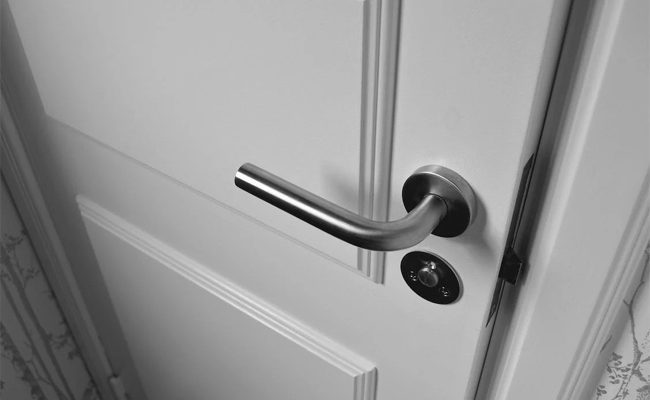
Imagine a comfortable home with stable temperatures year-round while lowering hefty energy bills.
This vision of saving money and shrinking your environmental impact is achievable through smart upgrades benefitting your wallet and the planet. Follow this guide to home improvements that boost energy efficiency.
Conduct an Energy Assessment
Before you start making changes, understand your home’s current energy use. Conducting a whole-home energy assessment allows you to establish a baseline to compare against once changes are made.
A professional or DIY assessment identifies inefficient areas to strategically target upgrades—using tools like a thermal leak detector, moisture meter, and blower door test. An energy evaluation thoroughly inspects the home to pinpoint areas of energy waste, such as air leaks, inadequate insulation, and inefficient systems.
Pinpoint Energy-Intensive Zones
Inefficient lighting, HVAC systems, appliances, and inadequate insulation are common culprits of high home energy use. An energy audit thoroughly inspects the home to identify the specific zones where the most energy is being wasted. This enables homeowners to smartly focus first on improvements that give them the most energy savings per dollar spent.
For example, sealing ductwork leaks that send cooled or heated air outside could provide higher and quicker savings than swapping out a few bulbs. Targeting upgrades based on audit findings ensures that effort and money are spent where they will have the maximal impact on improving the home’s overall energy efficiency.
Transition to LED Lighting
Swap traditional bulbs for energy-efficient LEDs that last much longer. Install dimmable ones and add lighting controls like dimmers, timers, and motion sensor switches to further optimize electricity savings.
Strategically place windows and skylights to maximize natural light during daytime hours. Incorporate light-colored, reflective surfaces and decor to brightly distribute sunlight throughout all rooms. Taking a multifaceted approach to your home’s lighting cuts consumption while enhancing aesthetics and ambiance.
Upgrade HVAC System
Heating and cooling account for a large share of home energy use. Opting for an HVAC system flaunting the ENERGY STAR badge and higher Seasonal Energy Efficiency Ratio (SEER) can massively shrink your electricity bills.
Installing a smart WiFi-enabled system allows remote temperature control and scheduling for further optimization. For an environmentally responsible HVAC option, heat pumps offer energy-efficient heating and cooling in temperate climates. Prioritizing HVAC upgrades based on an energy audit provides the greatest efficiency gains and cost savings from these major energy investments.
Install Programmable Thermostats
Doing so allows you to set customized heating and cooling schedules tailored to your lifestyle. This prevents energy waste by adjusting temperatures during times when comfort levels can be slightly lowered, like vacations or nights.
Modern smart thermostats use sensors, algorithms, and your usage patterns to optimize heating and cooling cycles—and enable remote temperature adjustments from your phone. Programmable thermostats let you tailor temperature schedules to match your daily grind for power savings. They keep your home comfortable when you are there while saving energy when you are away.
Unplug Devices and Use Power Strips
Many electronics and chargers draw “vampire” or “phantom” power when plugged in, even when off. These passive energy leaks can waste hundreds per year. Unplug rarely used devices like extra TVs and old chargers.
Use smart power strips to conveniently control multiple electronics and cut power on schedules or when detecting standby power drains. For additional efficiency, you can also install discreet access doors, like BA-PAC Removable Plastic Access Door, to conceal unsightly wires and allow maintenance access without disrupting walls. Properly controlling plugged-in devices and using highly versatile components provide easy electricity savings.
Add Solar Panels
Installing solar photovoltaic panels allows you to generate clean, renewable electricity from sunlight to power your home. This reduces reliance on the traditional electric grid and fossil fuel-generated power. A properly sized solar system can reduce your energy bills by 50-100% based on factors like your location and roof size.
Many providers offer affordable financing options as well. Once the system pays for itself from energy savings, extra electricity generated beyond what is needed can be fed back to the grid and credited through net metering programs with utility providers. Solar energy production reduces your carbon footprint while insulating you from rising energy costs.
Final Thoughts
You’re now armed with a comprehensive guide for turning your home into an energy-efficient haven. When implemented together, the upgrades create substantial energy savings while securing the planet’s future. Your home becomes an energy-smart model benefiting your wallet and the world. So, team up and lead by example to enact meaningful change through intelligent energy use.
The time is now to implement these home improvements. Do your part to safeguard the planet while saving money. Minor upgrades make a tremendous collective impact. Together, we can build an energy-wise world, one intelligent upgrade at a time.
Leave a Reply